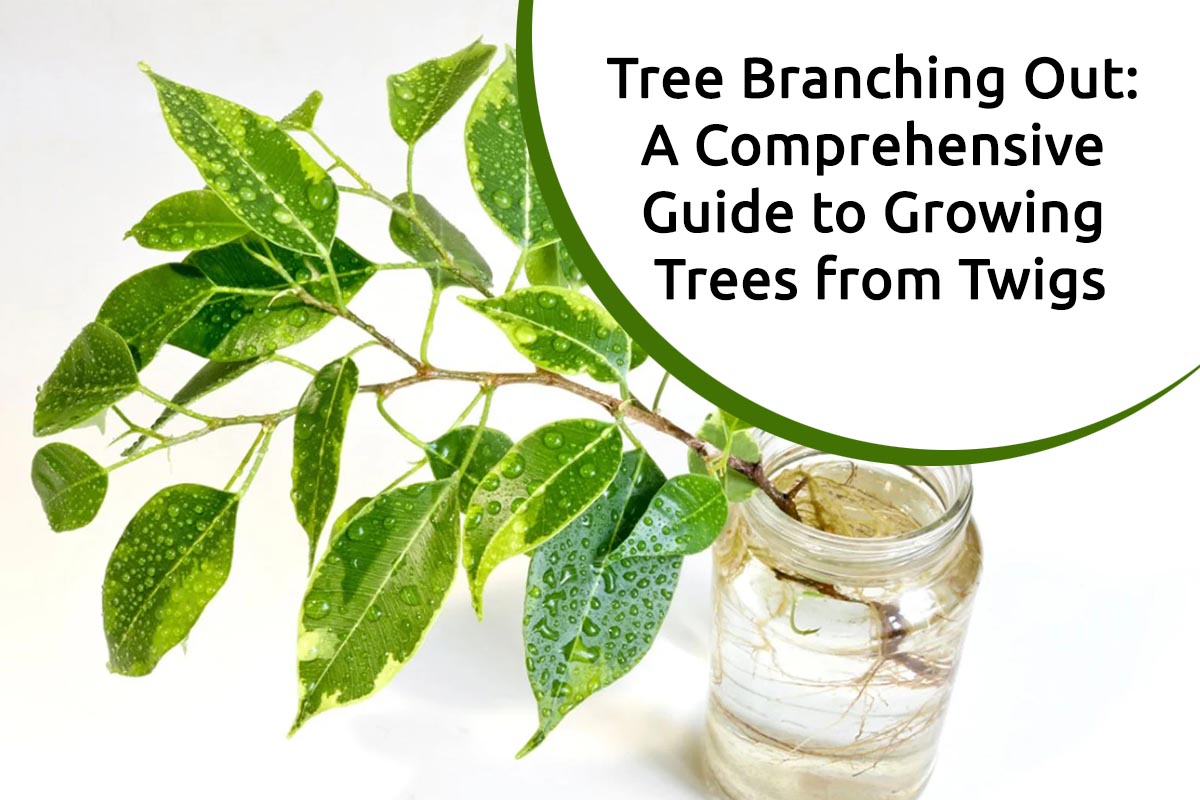
Tree Branching Out: A Comprehensive Guide to Growing Trees from Twigs
Are you interested in harnessing the power of nature and growing trees from twigs? Planting trees from twigs is an exciting and rewarding process that allows you to propagate new trees, contribute to environmental sustainability, and beautify your surroundings.
There’s something magical about watching a tiny twig transform into a majestic tree, reaching towards the sky and providing shade and beauty to its surroundings. While growing trees from seeds is a common method, did you know that you can also grow trees from twigs? Yes, it’s possible! In this comprehensive guide, we will explore the art of growing trees from twigs, offering step-by-step instructions and valuable tips to help you embark on this rewarding journey of nurturing life.
Also Read This : Coco Peat Gardening: Discover the Best Plants to Thrive in this Growing Medium
Tree Branching Out
If you periodically prune your trees to maintain a tidy backyard, you can utilize those trimmings to establish new trees. However, to ensure successful tree branch planting, it is crucial to encourage the rooting of those branch cuttings.
When planting trees from twigs, you will obtain trees that closely resemble the original or “parent” tree. However, this is only sometimes the case when planting seeds, as hybridization may occur due to the involvement of two different trees.
Also Read This : Common Gardening Mistakes and How to Avoid Them
Conversely, if the tree you wish to replicate is grafted, using tree branch growing as a propagation method is not recommended. Grafting involves joining the crown of one species with the rootstock of another species. Planting branches of grafted trees will only reproduce the crown tree. Certain trees and shrubs, such as forsythia, golden bells, and plane trees, readily and rapidly grow from cuttings. In fact, the cost of planting tree branches success rate is higher for specific species than planting seeds.
Also Read This : Gardening for Wildlife: How to Create a Habitat for Birds, Butterflies, and Bees
Growing Trees From Cuttings: A Step-by-Step Guide
Taking cuttings from trees for the purpose of cloning is super simple. Literally, anyone can do it.
But before you get started, you need a few supplies:
- A tree to take the cutting from
- A sharp pair of cutters
- Rooting hormone (or cinnamon)
- A container that holds Water
- A plastic sheet or a piece of foam
Also Read This : The Top Flowers to Attract Butterflies to Your Garden
Select a Proper Tree Branch
For the size tree you want, the size tree branch that works best for your cutting varies. Tree branches that are less than a year old make the best identical clones. Two and three-year-old tree branches can grow new trees, but the success rate is lower than younger branches. Also, the older the tree branch, the less likely the new tree will be identical to the parent.
Also Read This : 20 Low-Maintenance Aquarium Plants for Your Home
Measure the Branch
Depending on the species, the best tree branches for cuttings range in size from six to ten inches (up to two to three feet in length) with a diameter similar to that of a pencil. As you take your measurement, mark where you will cut it by notching the bark (or using a market).
Also Read This : 10 Tips for Growing a Beautiful Garden in a Small Space
Carefully Take Your Cutting
With a sharp utensil, preferably a pair of prunes, snippers, clippers, or heavy-duty garden scissors (the main point is that you use a powerful tool). The sharper the instrument, the cleaner the cut. Cut the branch’s base, on your mark, at a 45° angle. That way, the bottom of the cutting is wider. This is important as it allows the cutting to take up more Water and shoot out more roots.
Also Read This : 15 Low Maintenance Indoor Plants for a Stress-Free Home
Strip the Cutting of Leaves and Buds
With the same sharp tool, you use for cutting the branch free of its parent, carefully snip, clip, or cut each leaf and bud. When taking tree cuttings, it’s best practice to remove all the leaves (save for a few little bitty ones at the end of the whip, if you prefer).
Also Read This : Tulsi Vastu Tips: Items to Avoid Keeping Near Your Sacred Plant
Dip the Cuttings and Stick them in Water
Immediately after cutting the branches, dip them into the pre-prepared rooting hormone. If you prefer the organic route, decline them in prepared cinnamon powder. Either way, you decide to go, giving the fresh cutting a better chance to successfully sprout new roots. You can skip the rooting hormone and cinnamon altogether and still come out with a healthy clone in many cases. Whether or not you dip your cuttings or what you drop them with, stick them directly into clean, prepared Water.
Also Read This : How to Choose the Perfect Plants for Your Garden’s Climate
Alternatively, Dip the Cuttings and Stick them in Wet Dirt
Only some people prefer to grow their cuttings in Water. Some gardeners prefer sticking their fresh cuttings into incredibly moist potting soil. This method keeps the new cuttings and their soil soaking wet for the next two to three weeks. Typically, the cuttings begin to form roots shortly after and the growing medium’s heavy moisture level is reduced. Once the root system appears, watering is only necessary once weekly to continue its growth.
Also Read This : Top 20 Low-Maintenance Hanging Plants for Your Home




